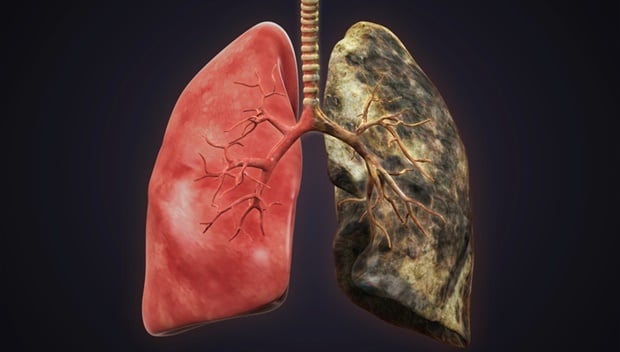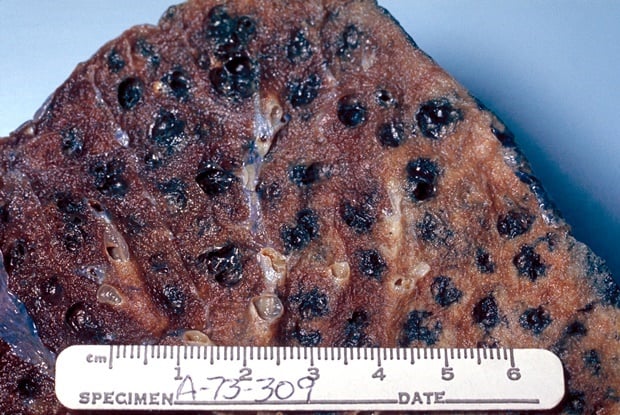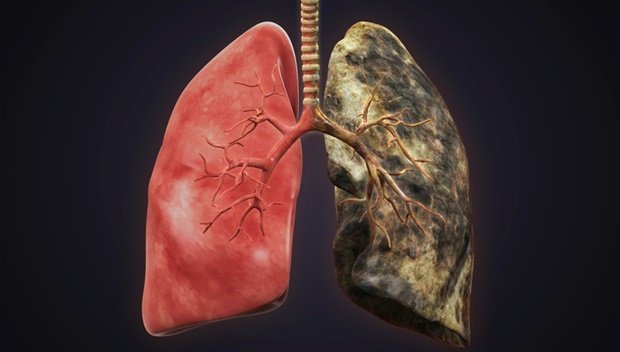Ever Wondered What a Smoker’s Lung Looks Like?
https://www.news24.com/health24/Medical/Asthma/Living-with-asthma/see-this-is-what-your-lungs-look-like-when-you-smoke-20160916
We all know there’s a link between smoking and asthma, but few people realise the full extent of the damage that tobacco smoking can do to your lungs. Even inhaling second-hand smoke can cause serious damage over the long-term.
According to Asthma UK, a research organisation, 82% of people with asthma say that tobacco smoke affects their asthma. This respiratory condition is marked by spasms in the bronchi of the lungs, causing difficulty breathing.
Not only does smoking cause permanent damage to the lungs, but it can trigger asthma symptoms, or even an asthma attack. People who are already suffering from this condition are at a higher risk of setting off an attack.
What the damage actually looks like
Here’s what an X-ray of a normal, healthy lung looks like (left) and one of a lung damaged by smoking (right).

Photo: iStock
Even a lay person can see the difference between the two images. The damage smoking does to lung tissue is very visible. Smoke contains 4 000 chemicals, including carbon monoxide. This makes the job of the lungs much harder and oxygen can’t properly circulate through the body. The chemicals in cigarette smoke irritate and inflame the airways and lungs.
These chemicals also disarm the lungs’ natural defence system. Tiny hairs in the airways, called cilia, sweep out toxins and other bacteria, but tobacco smoking prevent them from doing their job. This allows toxins and bacteria to build up.
A smoker’s lungs
Healthy lungs are light pink, while a smoker’s lungs appear dark and mottled due to inhaled tar. The texture of the two also differs, with damaged lungs being much harder and more brittle.

Photo: iStock
Chronic obstructive pulmonary disease (COPD) is a type of obstructive lung disease where long-term airflow is poor. Similar to smoking’s link to asthma, smoking can cause this disease. This close-up of the surface of a dissected lung shows multiple cavities filled with heavy black carbon deposits.

Photo: Wikipedia
A teacher at Yan Chai Hospital Tung Chi Ying Memorial School in Hong Kong, made this video after becoming concerned about the number of students taking up smoking. He compared two lungs (both are healthy at the beginning of the experiment) and allowed one to “breathe” clean air, while the other “smoked” 60 cigarettes. The results after this limited exposure to tobacco are quite alarming.
Can you turn the corner?
According to The Lung Institute in the USA, about 47% of smokers attempt to quit annually. But will quitting restore your lungs to a healthy condition?
Absolutely, says the research from Why Quit, a research and support organisation. The lungs’ ability to heal themselves is a marvel, but depending on how long you smoked, it can take some time for your lungs to recover.
- The first day after you quit smoking: Your blood oxygen level has increased to normal. Carbon monoxide levels have dropped to normal.
- The first month after you quit smoking: Your lungs will process oxygen more efficiently and anxiety related to quitting should disappear.
- The first year after you quit smoking: Your risk of developing coronary heart disease, heart attack and stroke has dropped to less than half that of a smoker.
- The first decade after you quit smoking: Your risk of lung, mouth, throat, bladder, kidney and pancreas cancer drops dramatically.

